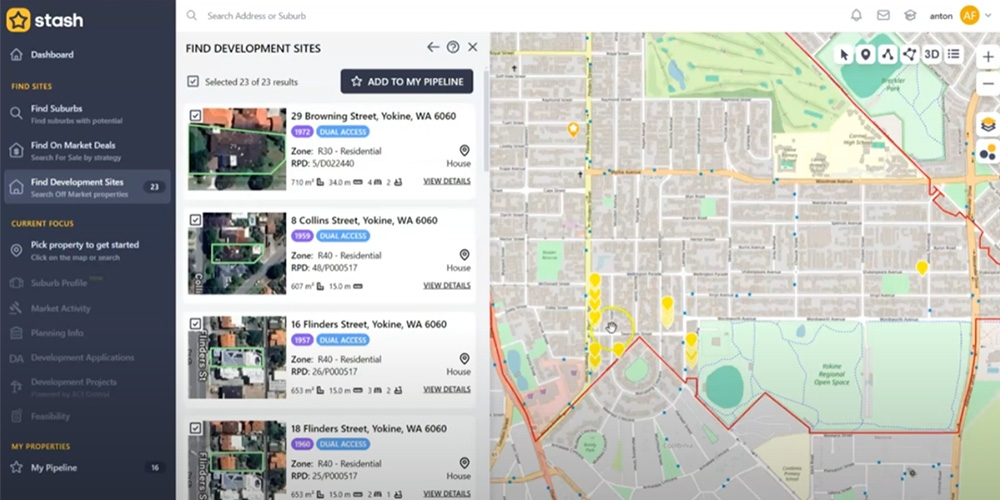
Consider your net tax position, not gross
This article has been prepared to highlight the importance of careful tax planning and advice before developing larger parcels of land in Australia. Many landowners are of the view that taking full responsibility for developing their own property will put them in a better position instead of just selling up, or getting professional help. The truth is that poor planning with any approach can leave the taxpayer in position where 50% or more of their of their profits go to the tax man after income assessment, just by developing their family home. Instead of just thinking costs, revenue and gross profits, it is vital to identify and consider and the circumstantial net tax consequences that arise of when development activity is undertaken.
It is a reality that the highest revenue achievable through subdivision invariably will require significant activity and money input. This does however attract proportionately higher tax consequences. Lower tax outcome scenarios are often only achieved where the land in question is disposed of with little application of any development activity, planned or actual, by th taxpayer themselves. These lower risk scenarios (ie. Disposal “as is”) have a reduced requirement for capital input form the seller, but also often means that a lower selling price is achieved because the risk is passed to the developer. This would be deemed “mere realisation of land”, being disposed as is at an appropriate market value reflective of its highest and best use.
We can generally summarise the following as a guide:
- Increase in revenue is directly proportional to the amount of capital vested in developing the land. The opposite is also true. I.e.. Value uplift is directly proportional to effort input and risk taken.
- Increase in income Tax liability is directly proportional to the amount of commercial activity undertaken to develop the land, the opposite also being true. I.e. The best net tax scenario on capital account can usually be achieved for the seller when the land is sold as is.
- Most landowners of these large lots “want their cake and to eat it too”, being they want the highest price possible without taking any risk, and decry the amount of profits they lose to tax on income when the curtains come down if they venture into trade or enterprise activity (ie, develop themselves in some way, shape or form).
Different tax treatments for developers in Australia
It is possible however to plan and structure land development activity (through careful consideration of taxpayer participation and the deployment of professional service agreements) in such a way that revenue increases, tax liabilities are minimized, and cost base is kept close to neutral.
An important element that drives mitigation of net tax consequences (and increasing the real cash in hand take out) is understanding if your activity is going to be treated as:
- The mere Realisation of Land (MRE)
- A Profit Making Scheme (PMS)
- Enterprise (a commercial business of property development).
Classification as the mere realisation of land allows all profits to be assessed on capital account, whereby enterprise is assessed wholly on revenue account. Profit making schemes are assessed under a combination of revue and capital account. The three different tax treatments therefore have enormously different consequence and impact upon a taxpayers CGT and GST liabilities, as well as cashflow. This is what makes it so important to consider (and plan accordingly for) your “net tax” outcome.
Key factors for determining tax treatment
Individuals need to plan their tax strategy according to the category they fall into, or rather the best category they should plan to fall into. Poorly planned and executed, the net tax position of a higher revenue scenario may be lower than the net tax position of low revenue scenario applied to the same parcel of land, depending on how the development is structured and undertaken.
In lay man’s terms, spending more does not always make more. Work smarter, not harder. Each landowners circumstances around the ownership, use and then disposal or activation land will be completely different, and must be assessed accordingly. Case law, legislation and tax bulletins informs us that the tax commissioner assesses each case by fact and degree to determine where the activity is assessed. Key considerations assessed are:
- Whether the land was initially acquired for profit making purposes
- The underlying intent (or lack thereof) of the taxpayer to make profit, or if this changed at some point (and when)
- If there are underlying ,non profit driven motives for selling the land
- The nature of the taxpayers day to day business or employment status
- The taxpayers prior experience in any subdivision or development activity
- The taxpayers association with or capacity to be influenced by other parties known to him that have experience in subdivision or development activity ( if advice is sought and when),
- If the activity is isolated in nature by the taxpayer
- The level of involvement of the taxpayer in the day to day running’s or management of the development (arms length can help extinguish enterprise treatment)
- The level of taxpayer funded borrowings sought and secured for project delivery
- The level of taxpayer involvement in the disposal of the subdivided lots ( marketing and/or vesting of depository power to other parties , arms length can help extinguish enterprise treatment)
- Magnitude and significance of works undertaken to realise the sites potential (ie, just enough to satisfy minimum council approval requirements or more)
- The absence or addition of dwelling construction to the activity (construction of dwellings typically triggering a view that enterprise is occurring).
- There is a change of purpose for which the land is held
- There is a level of development of the land beyond what is deemed necessary to secure relevant planning approvals for subdivision, and
- If dwellings have been erected on the land as part of the development activity
Determining how your development activity will be assessed
In determining whether activities relating to isolated transactions are an enterprise, profit making scheme or are simply the mere realisation of a capital asset, it is necessary to examine the facts and degree of each particular case. This may require a consideration of any number of the factors outlined above, or other relevant factors that the tax commission considers determinative in the case being assessed. need to be weighed up as part of the process of reaching an overall conclusion. Importantly, no single factor will be determinative. The narrative in entirety will be assessed holistically.
Slight changes in the taxpayers intent (and when/if this changes), involvement, and experience can have significant consequences for classification of tax treatment. What you say or imply, when, and to whom are very important in the commissions assessment of fact and degree in a case of activity assessment. You need to comprehend that tax talk should be at the top of the list when considering selling, venturing or working with any developing party.
Establishing the Fact and Degree applicable case by case (or what the narrative should be prior to an audit by making a submission for a Private Binding Ruling (PBR) with the tax office) will be critical in determining which of the three tax treatments are applicable and what the best net tax outcome will be for the taxpayer. Smart taxpayers will realise that modelling different tax treatment scenarios should drive their level of involvement in the project and the development strategy, not the other way round.
Where properties are held as tenants in common, family trusts or individual ownership, it is entirely possible that taking the back seat and developing at arms length (ie. by entering into a development agreement with a professional developer) will have the activity assessed as a Profit Making Scheme. This can put the taxpayer in a better net tax position if they time the venture of their property into the profit making scheme well and they are able to apply CGT discounts to the initial period of ownership and discount this against the latter portion of value uplift from the development activity that is treated on revenue account.
The benefit of a taxpayer being assessed as having undertaken a profit making scheme needs to be carefully weighed up against selling the property as is ( merely realising the asset) or transferring the property into a company and undertaking the project hands on without assistance (conduct of enterprise). Whilst transfer to and the conduct of enterprise under a company for the taxpayer would afford some recourse protection from development risk and a lower company tax rate, there would be the substantial added cost of transfer stamp duty and the foregoing of any CGT discount applications.
In summary, if developers and landowners alike can gain a deeper understanding of net tax consequences , smarter tax and profit outcomes are achievable for both parties. Through cooperation, risk is appropriately mitigated, and everyone can walk away with a better deal.
Don’t know where to start with capitalising on your assets through development? Get in touch with is and we can hep you get the tight advice to plan for success from the very beginning.
Tax planning is part of a professional feasibility study
Our professional subdivision feasibility studies and site investigation services facilitate your ability to make profitable, educated investment decisions before committing to a property development project- we will help to work out net, not gross profits, for consideration .




